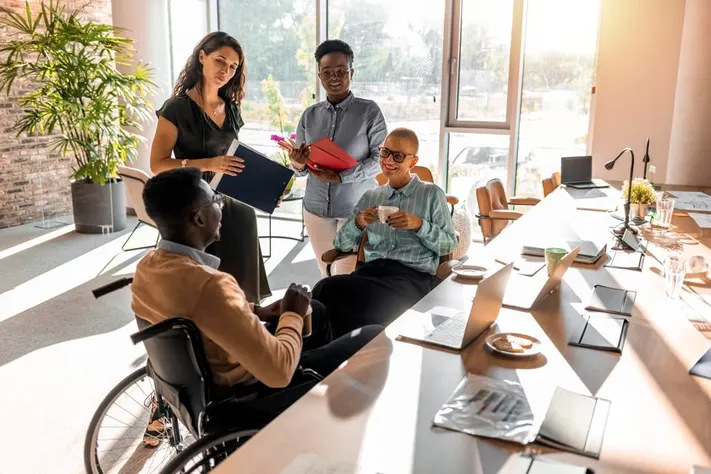
Why Inclusivity Needs to Go Hand in Hand with Diversity
We often hear the terms ‘diversity’ and ‘inclusivity’ thrown around together in workplace discussions, but they’re actually really different. Diversity is about bringing in people from different backgrounds (and yes, that’s incredibly important). But inclusivity is about making sure everyone – no matter who they are – feels valued, respected, and empowered to contribute. So, instead of choosing one over the other, lets think about how they work together to create a happy workplace.
Diversity is Essential, But It’s Not the Whole Picture
To be clear: diversity matters. A lot! Bringing in people with different perspectives, experiences, and backgrounds enriches our workplaces in ways we can’t even quantify. But diversity alone isn’t enough. If those diverse voices aren’t genuinely heard or respected, then all you’ve done is check a box. Inclusivity is what makes diversity meaningful – it’s about creating an environment where every single employee, regardless of their background, has a seat at the table and their voice is not just heard, but valued.
Culture Add vs. Culture Fit
We’ve all heard about the importance of ‘culture fit’ in hiring. But if we’re only hiring people who fit into the existing culture, we’re just reinforcing the same old, same old. Instead, let’s move the conversation towards ‘culture add’. This means bringing in people who align with your company’s values but also bring something new to the table. Whether it’s a fresh perspective, a different experience, or a new set of skills, culture add is about evolving and enhancing your workplace culture, not just maintaining the status quo.
The stats don’t lie. Companies that prioritise ‘culture add’ over ‘culture fit’ are more likely to encourage innovation and improve employee engagement and retention. Research from McKinsey shows that inclusive workplaces are 36% more likely to outperform their peers in terms of profitability. So, if you’re still stuck on culture fit, it might be time to rethink your approach.
How to Build a Truly Inclusive Workplace (That’s Also Diverse)
- Rethink Your Hiring Practices: It’s time to look beyond how well a candidate fits into your current culture. Instead, ask yourself: What unique value can they add? This might mean re-evaluating your interview questions or changing up who’s involved in the hiring process to get a broader perspective.
- Promote an Inclusive Culture: Inclusivity starts at the top. Leaders need to model inclusive behaviours, and companies should offer training on topics like unconscious bias, active listening, and inclusive communication.
- Create Safe Spaces for Dialogue: Encourage open conversations about inclusivity and diversity within your organisation. This isn’t just about ticking a box – it’s about genuinely listening to your employees’ experiences and ideas on how to make the workplace better for everyone.
- Measure and Adjust: Use employee surveys and other tools to gauge how inclusive your workplace really is. And don’t be afraid to make changes based on feedback. If something isn’t working, fix it.
Both diversity and inclusivity are essential. It’s not about choosing one over the other – it’s about ensuring they work together to create a workplace where everyone feels valued and heard.
So, let’s move beyond the old-school concepts of diversity and culture fit. By embracing inclusivity and thinking about culture add, we can create a far more dynamic, innovative, and successful workplace. Essentially, it’s not just about who’s in the room, it’s about making sure every voice in that room is heard and respected.
Get in Touch
"*" indicates required fields
"*" indicates required fields